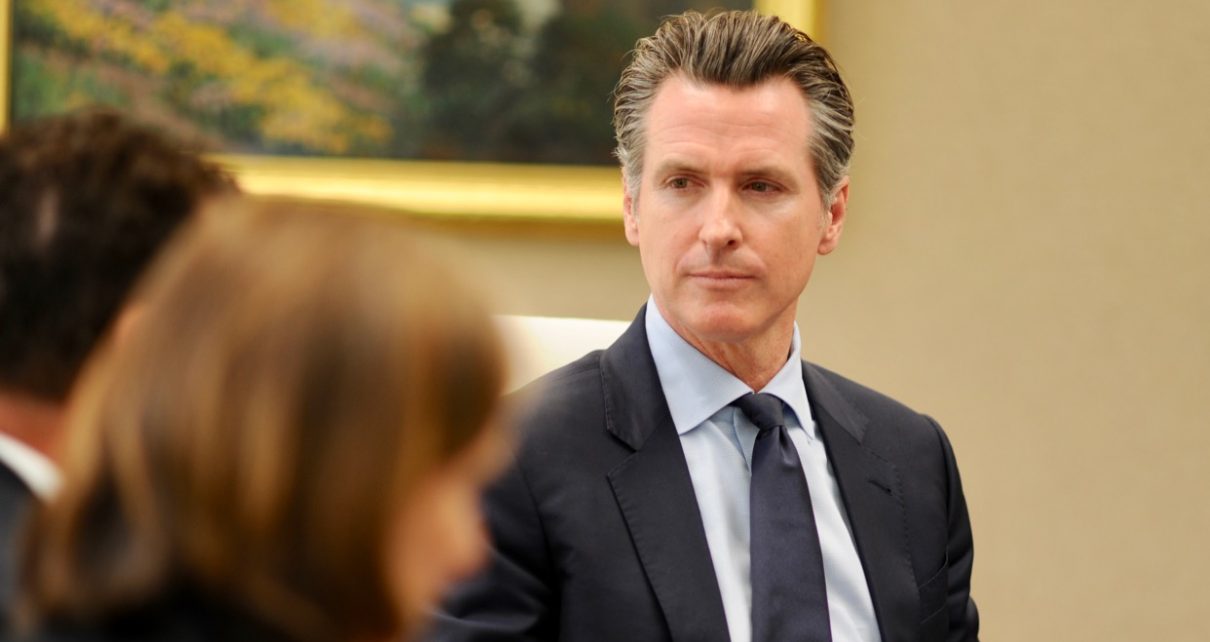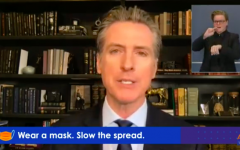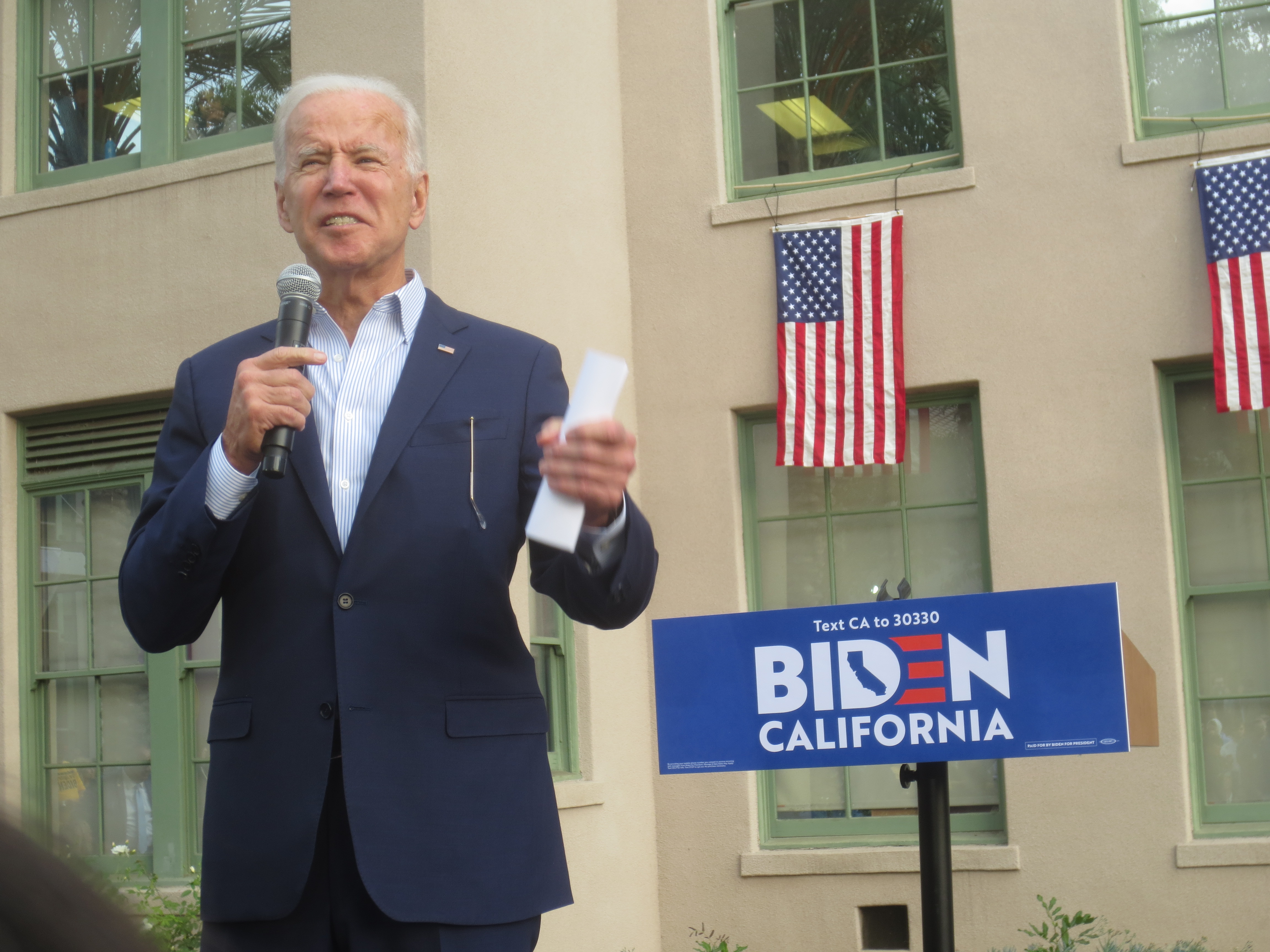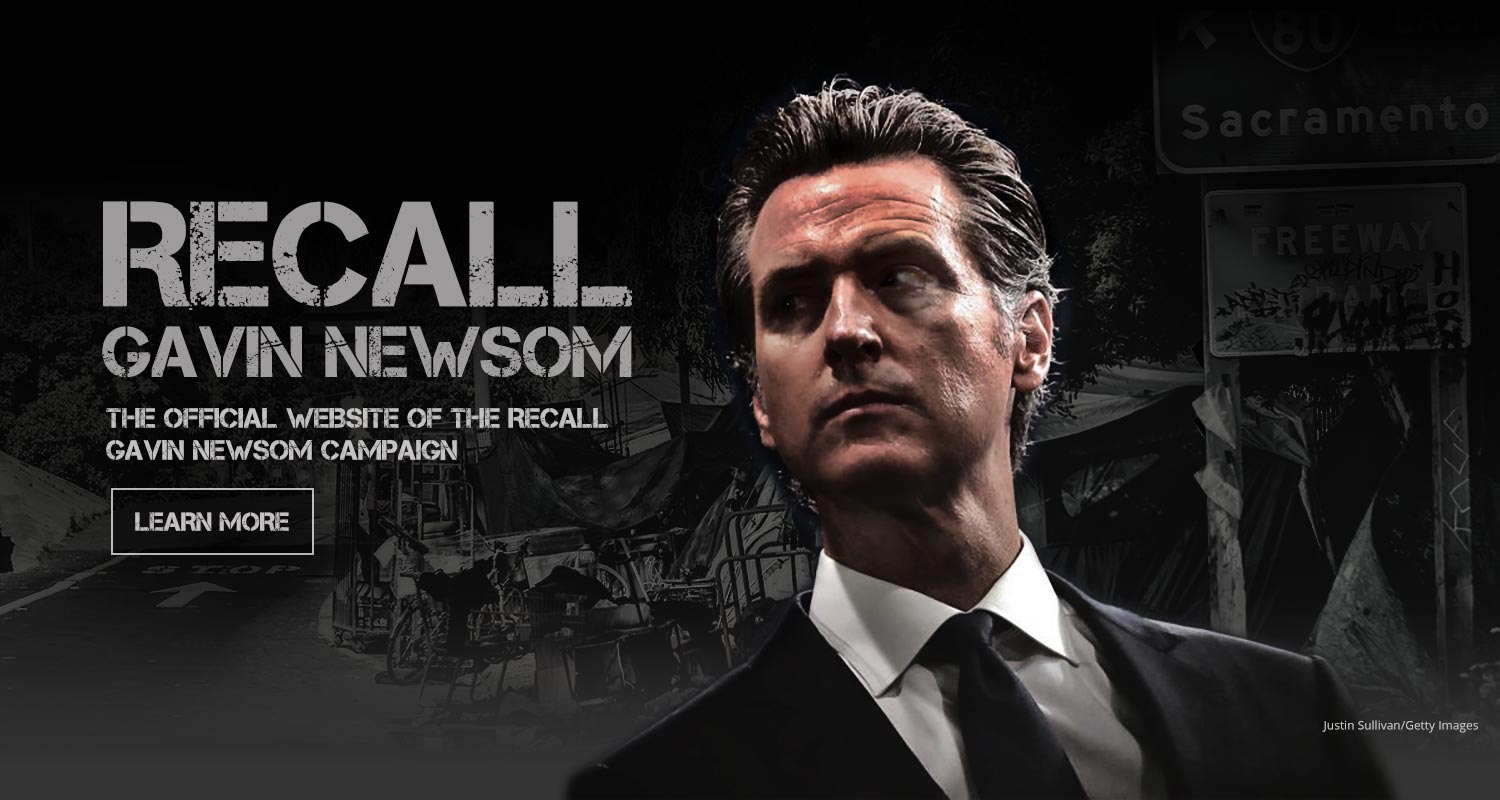
Governor Gavin Newsom. (Photo: Kevin Sanders for California Globe)
Polling Shows Gov. Newsom is More Vulnerable Than He’d Like
Time may have been on Mick Jagger’s side, but it seems it is not on the Governor’s
By Liz Mair, May 20, 2021 2:20 am
The notion that California Gov. Gavin Newsom could be recalled just months after America rejected the re-election campaign of former President Donald Trump, and just as Democrats appear ascendant nationwide, seems fantastical on its face.
Press play to hear a narrated version of this story, presented by AudioHopper.
California is dark blue. Newsom is a Democrat. Independents aren’t keen on a Republican Party in which Trump remains dominant. Republicans running to replace Newsom are giving interviews that look as designed to set themselves up for a future TV talk show as for serious gubernatorial candidacies— one is even campaigning with a bear that seem to get more press than him.
And yet, Newsom, as well as his consultants and backers, are taking the threat very seriously despite trying to appear nonchalant in public.
It turns out there’s a reason why, and it’s not just that the recall offers Newsom the opportunity to raise unlimited funds, free of contribution limits ahead of a 2022 re-election battle, when he’d probably prefer to spend his cash. It’s because polling in the race actually shows some worrying trends for Newsom. Campaign-watchers should pay attention, because there is a lot going on here that hasn’t been much-remarked upon—yet.
In March, the Public Policy Institute of California (PPIC)—previously the runner-up in the “best California pollster” stakes, now top dog thanks to the demise of the Field Poll a few years ago— released a poll relating to the recall. It is still the most recent PPIC poll as of this writing, and the results are curious—specifically, when compared to what the Field Poll found in 2003 before former Gov. Arnold Schwarzenegger announced his entry into the race, and months ahead of then-Gov. Gray Davis’ successful recall. While PPIC and Field are obviously different, they’re not that different (more like oranges to tangerines as opposed to apples to oranges).
And taking a look at what Field found in 2003 coupled with what PPIC found at the end of March delivers a striking conclusion: Arguably, Newsom is more vulnerable, at least right now, than Davis was at the same point in time.
In April 2003, Field found that a mere 33 percent of respondents would support recall of Davis. As of the end of March of this year, PPIC found that 40 percent of respondents supported recall of Newsom. Moreover, in April 2003, 62 percent of respondents told Field they proactively would not sign a recall petition. As of the end of March, PPIC had 56 percent definitively in the “no, don’t recall” camp. Objectively, this suggests Newsom is in a worse position than Davis was with regard to recall, specifically.
Here’s where the oranges to tangerines dilemma becomes potentially significant: Are we to conclude that PPIC is just that much worse a pollster than Field that it is failing to detect vastly more support for Newsom than its poll suggests? To follow the analogy, is PPIC just too much juice, not enough fiber? Let’s take a look at PPIC’s June 2003 poll (unlike Field, they did not poll in the spring), which may offer a hint.
Even into June, with recall fast approaching, PPIC still did not find a majority in support of chucking Davis. PPIC’s June 2003 number tapped out at 48 percent among all respondents. That was a worse number for Davis than Newsom’s current 40 percent. But it’s worth noting that there are months to go in this campaign, just as there were in 2003—and ultimately, while PPIC put support for a recall then at 48 percent, the “yes” on recall campaign ended up bagging over 55 percent of the votes. That constituted a seven-point undetected advantage. Consider the prospect of a seven-point undetected advantage to the pro-recall side right now, plus the possibility that problems might increase, not decrease, for Newsom and you understand why his coterie is taking this very seriously indeed.
But there is more. Set aside that Newsom has an astonishing knack for self-injury, and bad recovery (think the French Laundry matter, which he has still not put to bed, plus things like his false claim that his own children are suffering from remote learning, when his kids have been back to in-person schooling since fall last year).
There is also the fact that he continues to bank poor marks on the issues of homelessness and housing affordability, issues of major concern across the Golden State. According to last week’s UC Berkeley Institute of Governmental Studies/LA Times poll, “57 percent said the governor has done a poor or very poor job addressing [homelessness],” and “53% of voters saying he’s done a poor job on [housing affordability]” (the latter having been dubbed a “big” or “somewhat of a” problem by 90 percent of Californians in that March PPIC survey). Berkeley IGS/LA Times also shows criticism growing, but already at 42 percent (a seven-percent increase from September), of Newsom’s management of crime and criminal justice. Homelessness and housing affordability are not issues that can, or will, be solved on a dime, whereas crime is something that can—though it may not— explode lightning-fast as a problem. This is to say that where Newsom is most vulnerable, he probably has the least latitude to control outcomes to improve his political standing.
On the flip side, Newsom now has markedly higher job approval ratings than Davis did. In 2003, Field and PPIC put Davis’ approval at 24 percent and 28 percent, respectively. Per PPIC now, Newsom has a 53 percent approval rating among likely voters. California Democrats, including in the legislature, seem to be betting he can push that number higher, given the budget surplus and perceived ability to spend lots to win favor. But again, homelessness and housing affordability are tough to fix in any immediate term—even if Newsom goes on a spending spree. Plus, if recall proponents get a seven point bump like they did in 2003, Newsom ekes out a win with 53 percent, if you use PPIC’s support-for-recall number, or 51 percent, if you use PPIC’s disapproval number, as your baseline. In 2018, Newsom won with 62 percent. A win is a win, but 51 percent is definitely not close to 62 percent—and 51 percent offers no real bounce heading into 2022.
These numbers look even more embarrassing when you consider that Newsom is operating with a more Democratic electorate than Davis had. 42 percent of those responding to Field’s questions in 2003 were Democrats. 46 percent of those responding to PPIC’s March survey were Democrats. About 34 percent responding to Field in 2003 were Republicans. Only 24 percent of those responding to PPIC last month were Republicans.
Sure, a more Democratic electorate should make it easier for Newsom to survive. But since the electorate is more Democratic, shouldn’t Newsom be doing better? It’s worth noting that on top of the homelessness, housing affordability and crime concerns, Newsom’s levels of support are a little softer with Latinos than he would probably like. Just ahead of Newsom’s 2018 election, his support from Latinos stood at 65 percent per PPIC. Now, per PPIC, it stands at 60 percent. Even a couple points here matter because Latinos are the biggest ethnic group in California. Newsom’s numbers with white voters may be virtually static (in the low-40 percent range), but his numbers with Latinos are not, and Latinos may be even more affected by the issues where Newsom polls badly than better-off whites. Latinos are also a faster-growing segment of the population:According to Pew, California’s Latino population jumped 4 points between 2010 and 2018; undoubtedly it has increased further since then. If Newsom’s numbers with Latinos decline just a little, again, he could have a closer race than he wants.
Of course, none of this even touches on 2022, when Newsom will also be on the ballot. Emerson polling, which put support for his recall at the same level as PPIC’s likely voter disapproval number, shows 58 percent of voters wanting someone to replace him via next year’s vote. Time may have been on Mick Jagger’s side, but it seems it is not on the Governor’s.
This is, in sum, why we will see Newsom raise and spend a phenomenal amount of money (likely including a bunch from firms to which he’s given no-bid contracts, including his handpicked vaccine distributors), and go balls-to-the-wall in trying to convince more voters that the recall really is a choice between him and Donald Trump (and Trump’s hardest core fans).
Will it work? Probably. But Newsom could win this battle only to face an uglier war in 2022, when most voters already want him out, anti-Democratic turnout will likely edge higher, and his cash supplies could be depleted.
- Polling Shows Gov. Newsom is More Vulnerable Than He’d Like - May 20, 2021
- LA DA Jackie Lacey Suddenly Struggling - April 10, 2019
- California’s War on Vaping Will Hurt More Than It Helps - April 8, 2019





America DID NOT reject the re-election of President Donald Trump. America re-elected President Donald Trump with great numbers, Democrats committed election fraud with greater numbers. You lost me with the beginning of the article.
Another way to look at the 2020 events; is that stakeholders adjusted the election to save their bacon. Adjustments before, during and after the election. Ask Jimmy Carter about election honesty. Means, motive and opportunity.
If you come home and find your beer missing and a teenager pissing in the back; can you surmise?
And a lot people voted for Biden.
Thank you! You beat me to it. DJT won by a landslide but fraud kept him out…………… for the time being. 😉
Boutique analysis. Pure speculation. 2003 to 2021 comparison has little to offer.
The #DemParty may still cheat and keep it off the ballot, but let’s assume the recall makes the ballot.
The CA #DemParty is far left. The far, far left may run a candidate. If they bring 10-15% of the vote plus the usual ~40% Republican vote in statewide elections, the recall may succeed. Then, with only one prominent Dem on the ballot vs. a gaggle of Reps, the far, far left BernieCrat may become governor.
In addition, the #DemParty vote fraud apparatus may divide between Newsom and the far, far left Dem.
Que the Soviet anthem.
Glad to see this analysis. Thank you.
Comrades
Wise up…anyone living/existing in a State Command Economy neva believe polls from corrupt media of the State…..so don’t get hopeful over false flags and blatant propaganda from media, cultural influencers, Globalists, Tech Barons, even some warped health professionals.
I don’t understand why nobody’s talking about Newsom’s father and Nazi War Criminal Otto von Bolschwing:
https://www.bitchute.com/video/jaR8PXfUTaV2/
Trump won Biden cheated
“…he could have a closer race than he wants.” Newsom should not be surprised if the results are close. A decisive majority of Latinos who will vote for the recall will be angry of his handling of the pandemic. And any Democrat that backs him should jump before that ship sinks.